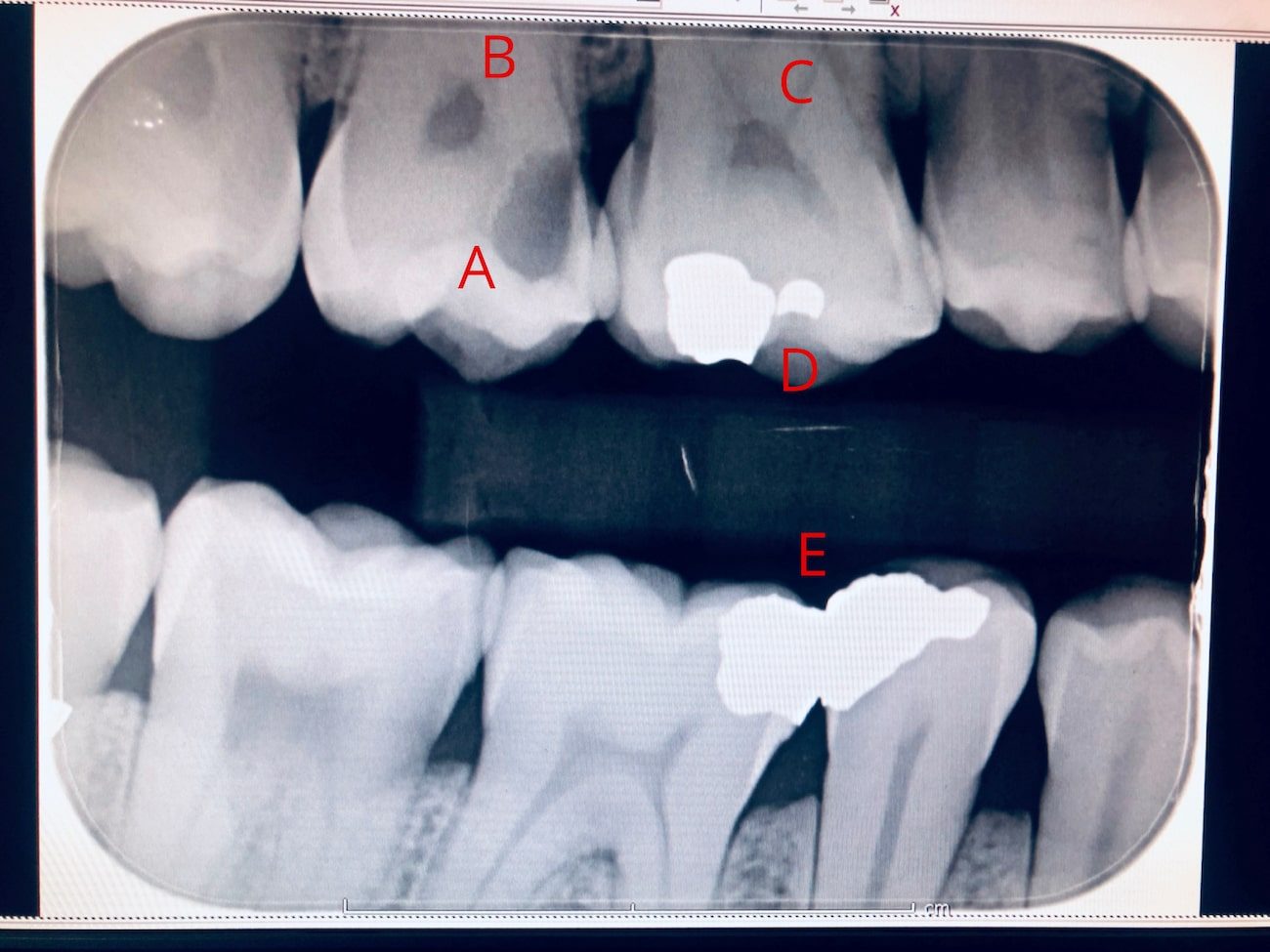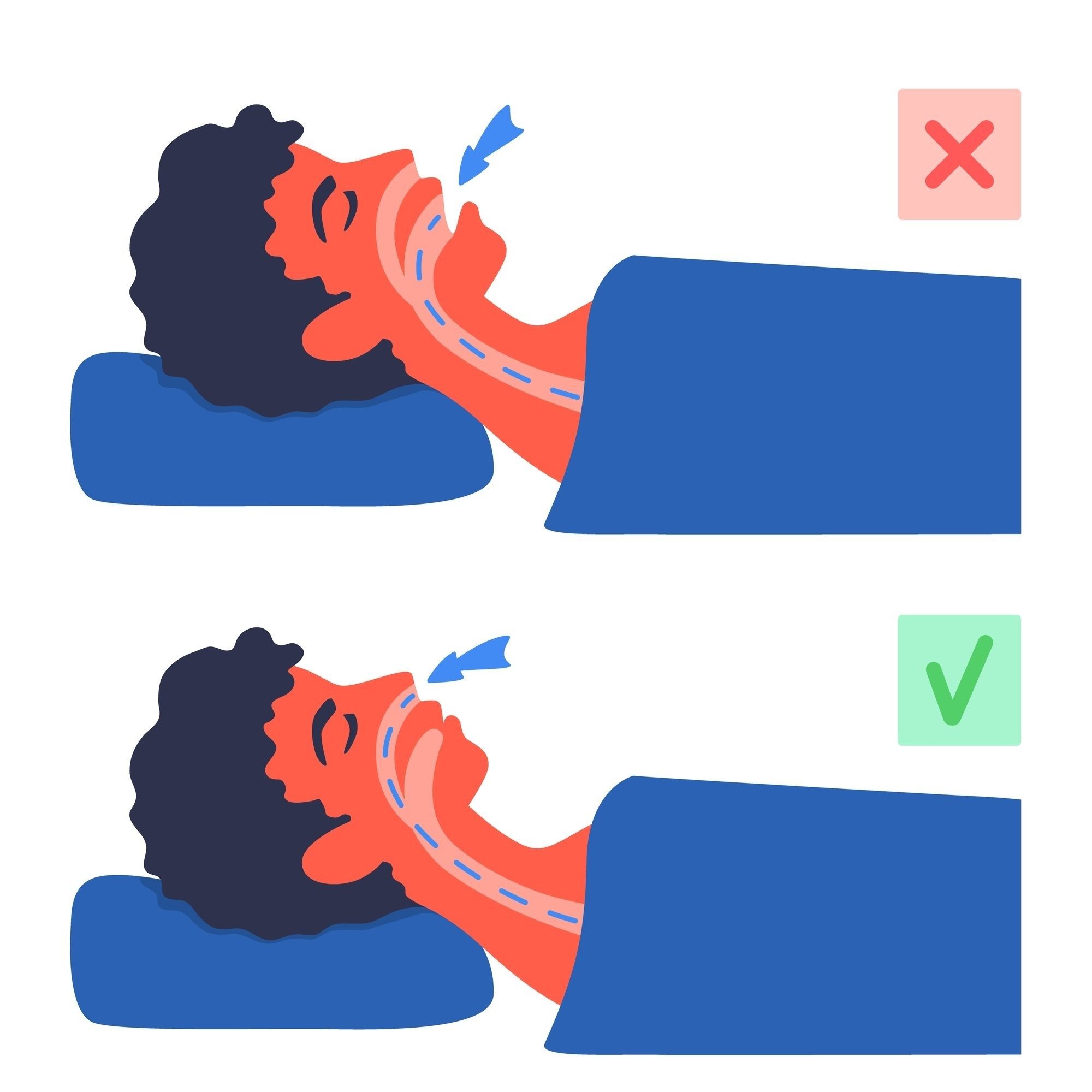What Do Cavities Look Like?
Most people, throughout their lives, have cavities. But while they may have them, most never actually see them.
This is because we rely on dentists to inspect our mouths, and even if we examine our mouths, we often don't know what to look
for.
So, with that being said, what do cavities look like?
What is a Cavity?
First of all, let's define what a cavity is. A cavity is essentially a hole in the tooth which results from tooth decay. Cavities start on the tooth's surface - the enamel - and, if left untreated, continue to erode the tooth. Over time, the cavity will expose the inner layers of the tooth - the dentin and the pulp chamber - at which time, they can become very painful and lead to a whole host of health problems. Thus, it is important to know what cavities look like to identify and treat them early.
What Do Cavities Look Like - The Difference Between Active Decay and Arrested Decay
All cavities look like a hole in the tooth. However, it is important to note that there are two types of cavities; those that are caused by active decay and those that are caused by arrested decay. Cavities will look different depending on the type of decay.
What do Cavities Look Like in Active Decay?
If someone has active decay, cavities will appear orange or light brown in colour. When the dentist probes the cavity with their instrument, it will usually be soft and sticky. In this instance, the cavity will often cause pain. Active decay is where the decay process is still ongoing. Thus, this type of cavity often needs more urgent treatment.
What do Cavities Look Like in Arrested Decay?
In arrested decay, though, cavities will often look darker in colour (showing as dark brown or black). The cavity itself will also be harder to touch, and because of this, they are usually less painful. Arrested decay does not mean the cavity is no longer a problem, but rather that the process of decay has slowed or stopped - thereby requiring less urgent treatment.
What do Cavities Look Like on X-Ray?
Teeth are comprised of three layers; the enamel (outer layer), dentin (middle layer) and pulp chamber (inner layer). When looking at teeth on an x-ray, these three layers are different in colour. The enamel is the brightest, the dentin is grey, and the pulp chamber is a darker shade of grey.
When looking at a healthy tooth on an x-ray, the thick white enamel band will encompass
the entire tooth. When the tooth has a cavity, there will be grey dots or chunks of the white band (enamel)
missing. As the cavity worsens, these dots or chunks will make their way towards the inner layer of the tooth (the pulp chamber). At this
point, the cavity is severe and needs urgent attention. If the cavity gets to the pulp
chamber, the nerve can be exposed, which causes significant pain.

(A) Shows what cavities look like on x-ray - notice the darker shade of grey. (B & C ) Show the nerve of the tooth. (D &
E) show mercury amalgam fillings - they appear very bright white on x-ray.
What do Cavities Look Like in Toddlers and Young Children?
Cavities look the same in the mouths of toddlers and children - they are defined by a hole in the tooth. Parents should be aware of the differences between stains on the teeth and cavities when it comes to toddlers and children.
Often, we have parents who visit us concerned about dark marks on their toddler's or children's teeth. These are often stains - not cavities - where a slight groove in the tooth becomes a darker colour. More often than not, these stains are superficial and require no immediate action. Instead, we suggest monitoring them to ensure they do not develop into cavities.

From left to right; (L) no decay or stains; (M) stains, but no cavities; (R) Cavities. Image courtesy of https://www.3m.com
What Causes Cavities?
Cavities are caused by tooth decay, and tooth decay is caused by excess sugar in the diet and improper dental hygiene. Sugar harms the teeth in two ways. Firstly, sugar leads to the formation of plaque, which eventually converts to acid. This acid erodes the enamel layer - ultimately creating cavities. Secondly, sugar behaves as a hormone disruptor in the body and reverses the flow of fluid in the teeth - ultimately causing bacteria to get sucked into the tooth instead of flowing out of the tooth. This bacteria also causes cavities. You can read more about the impact of dentinal fluid transport here.

Understanding What Causes Tooth Decay
There is a common misconception that tooth decay is entirely normal and something that most humans suffer from and have suffered from since the beginning of time...

A High Fat, High Protein Diet is Best For Your Teeth
Brushing your teeth is important, but the best thing you can do to prevent tooth decay and improve your oral health is to change your diet to one that is high in protein and fat...
Nearly everyone is aware that sugar causes cavities. However, most people aren't aware of what foods are high in
sugar - they believe that simply avoiding lollies, chocolate, and soft drinks will prevent cavities. However, this thinking ignores the
high amounts of sugar in other ostensibly healthy foods like cereals, fruits and juices. It also ignores the fact
that all carbohydrates are broken down into sugar.
So, while someone's diet may be low in lollies, soft drinks and other sweets, it may be high in cereals, bread and carbohydrates and comparatively low in fat and protein. This is the most common cause of tooth decay and cavities.
How to Prevent Cavities
Ultimately, preventing cavities (or even arresting decay) is about adhering to a proper diet (as well as maintaining good oral hygiene). When treating patients with cavities, we encourage them to change their diet from one that is lower in carbohydrates and sugar to one that is higher in fats and proteins. We suggest the same for parents whose toddlers and young children suffer from cavities.
Click here to learn more about why a high fat, high protein diet is best for preventing cavities.

Vitamin K2 and its Benefits for Teeth
Vitamin K2 is one of the most important vitamins for health, but particularly for the teeth. Learn all about the benefits of vitamin k2 and how it can even remineralise the teeth...

How Mouth Breathing Causes Tooth Decay
Breathing through your mouth instead of your nose drives dental decay. Why? Because it hinders saliva production - which is one of the mouths primary mechanisms in protecting oral health...
